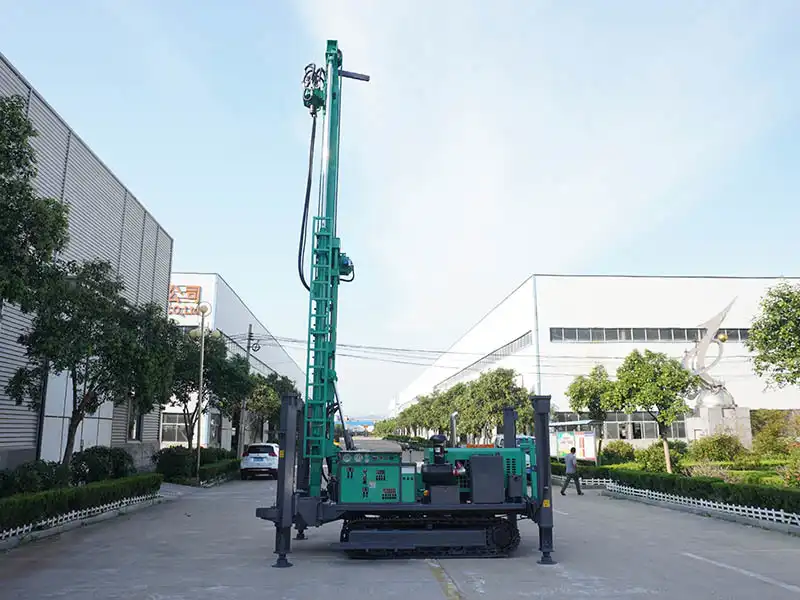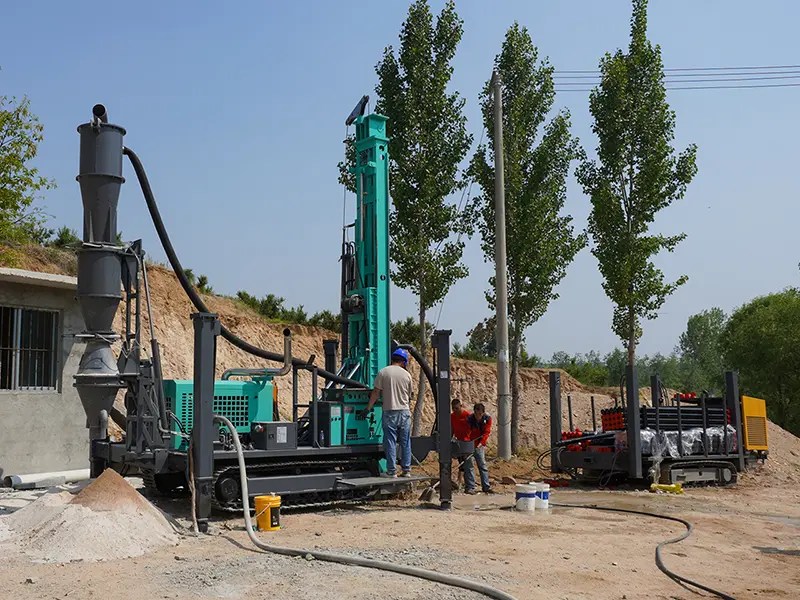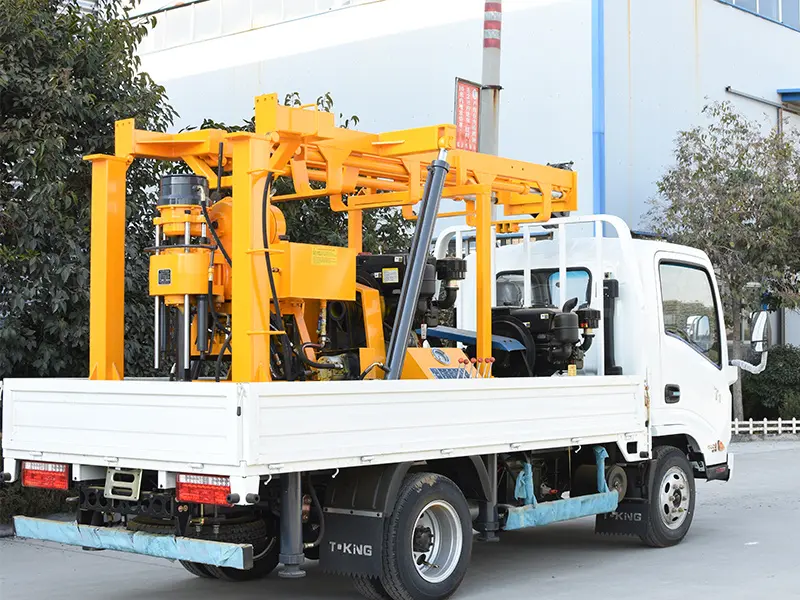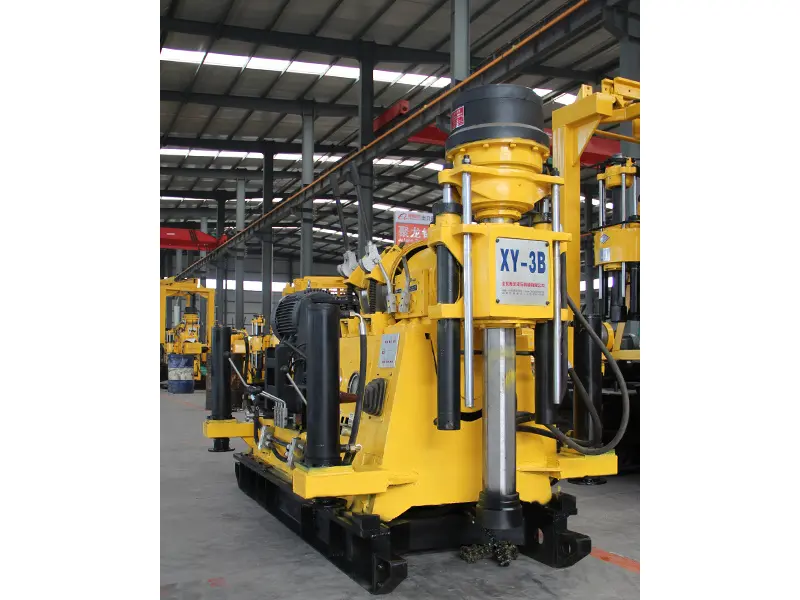Veekaevu ideaalne sügavus ei ole mingi maagiline number. See sõltub geoloogiast, vee kvaliteedist, kasutusvajadustest ja kohalikest eeskirjadest. Kuigi on olemas madalad kaevud (alla 100 jala), ulatub enamik kaasaegseid elamute puurkaevusid vahemikus 100-800 jalga sügavale, kusjuures 200-400 jalga on tüüpiline usaldusväärse saagikuse ja ohutuse tagamiseks. Liiga madalale puurimine toob kaasa saastumise ja põuaohu ohu; liiga sügavale puurimine raiskab ressursse ilma garanteeritud kasuta.

Miks sügavus on oluline: Varjatud tegurid
Veekogude asukoht ja veevarustuse kindlus
Vesi asub maa-alustes kihtides, mida nimetatakse põhjaveekogud-poorsed kivimid, liiv või kruus, mis hoiavad vett. Puurimine peab tungima nendesse tsoonidesse:
- Madalad põhjaveekihid (50-150 jalga): Täienevad kiiresti, kuid on tundlikud pinnasaaste (nt väetised) ja põua suhtes.
- Sügavad põhjaveekihid (200+ ft): Sageli annavad puhtama ja stabiilsema vee, kuid nõuavad spetsiaalset veekogust. veepuurkaevude puurimisseadmed jõuda.
Põuale vastuvõtlikes piirkondades, nagu kuivas Aafrikas, võib olla vaja puurida 500-800 jalga, et tabada vastupidavad põhjaveekihid.
Vee kvaliteet ja ohutus
Sügavamad puurkaevud mööduvad tavaliselt reoveest, põllumajandusest või tööstusest pärinevatest saasteainetest. Näiteks:
- Bakterid ja nitraadid imbuvad tavaliselt kaevudesse, mille sügavus on alla 100 jala.
- Rohkem kui 200 ft kõrgusel filtreerivad looduslikud geoloogilised kihid lisandeid, vähendades töötlemiskulusid.
Saagikuse nõuded
Kodumajapidamises on vaja 5-10 gallonit minutis (GPM); põllumajandusettevõttele võib vaja minna 50+ GPM. Sügavam puurimine võimaldab sageli juurdepääsu suurema vooluhulgaga kõrgsurveallikatele. Professionaalne saagikuse testimine puurimisjärgselt määratakse kindlaks, kas sügavus vastab nõudlusele.
Kuldkinga tsoon: Sügavuse sobitamine teie vajadustele
| Kaevu tüüp | Tüüpiline sügavus | Plussid ja miinused | Best For |
|---|---|---|---|
| Madal kaev | 30-100 ft | ✅ Madalad kulud, kiire puurimine ❌ Madal saagikus, kõrge saastumisoht | Erakorraline niisutus, mittejootmise eesmärgil |
| Standard elamu | 100-400 ft | ✅ Usaldusväärne saagikus, hea filtreerimine ❌ Mõõdukad, vajab sukelpumpa | Kodud, väikesed talud |
| Sügav kaev | 400-800+ ft | ✅ Kõrge saagikus, puhtaim vesi ❌ Väga suured kulud, vajalikud keerulised seadmed | Kogukonnad, põuapiirkonnad, kaubanduslik kasutamine |
Kuidas spetsialistid leiavad "Sweet Spot"
Kaasaegsed puurijad ei arva - nad kasutavad teadust:
Geoloogilised uuringud ja kohalikud andmed
Piirkondlike kivimvormide ja naaberkaevude logide uurimine ennustab põhjaveekihi sügavust. Hiina Yellow Riveri vesikonnas näitasid andmed, et 140 m (460 jalga) on piirväärtus - madalamad puuraugud kasutasid pump-imispuurauke; sügavamad puuraugud vajasid mudarotatsioonipuurauke.
Katsepuurimine
Väikese läbimõõduga prooviaugud kontrollivad vee olemasolu ja kvaliteeti enne täismõõtmelist puurimist.
Reaalajas tehtavad tehnilised kohandused
Veekaev puurtornid kohandada protsessi keskel:
- Roomikpuurtornid (nt SR-300RC), millel on tagasivoolusüsteemid, puurivad tõhusalt kuni 300 jalga, kogudes prahti, et vältida ummistumist.
- Veoautodele paigaldatavad platvormid (nt XYC-200) saavad hakkama 600-jalgsete puuraukudega, kasutades hüdraulilisi pöörlemissüsteeme kõva kivimi jaoks.
- Veepuudusega piirkondades, vahtpuurimise tehnika süstitakse vee asemel õhku, et võimaldada 800-jalgset puurimist ilma kohalikke ressursse ammendamata.
Vältige neid kulukaid sügavuse vigu
- Ülepuurimine: "Sügavam on parem" on müüt. Üle 500 jalga tõuseb temperatuur ja mineraalide sisaldus, mis võib põhjustada joogikõlbmatuks muutuvat vett.
- Allapuurimine: Säästab algkulusid, kuid riskib kuiva suve ja saastumise tõttu kulukaid ümberpuurimisi.
- Puurijärgsete sammude eiramine: Kaevu sügavus ei tähenda midagi ilma õigesti dimensioneeritud puurkaevuta. sukelpump. Ülisuured pumbad tühjendavad põhjaveekihti; alamõõdulised pumbad ei suuda tarnida.
Lõpptulemus: Usalda protsessi
Ükski puurkaev ei ole identne. "Õige" sügavus tuleneb:
✅ Asukohaspetsiifilised andmed (geoloogia, kasutamine, kliima)
✅ Professionaalne puurimine koos täiustatud veepuurkaevude puurimisseadmed
✅ Ranged saagise/puhtuse testid
Investeeri üks kord, investeeri õigesti: Kaev, mis on puuritud täpne sügavus ekspertide poolt kestab 50+ aastat ja vähendab pikaajalist hooldust. Ärge riskige otseteed - põhjavesi on liiga väärtuslik


